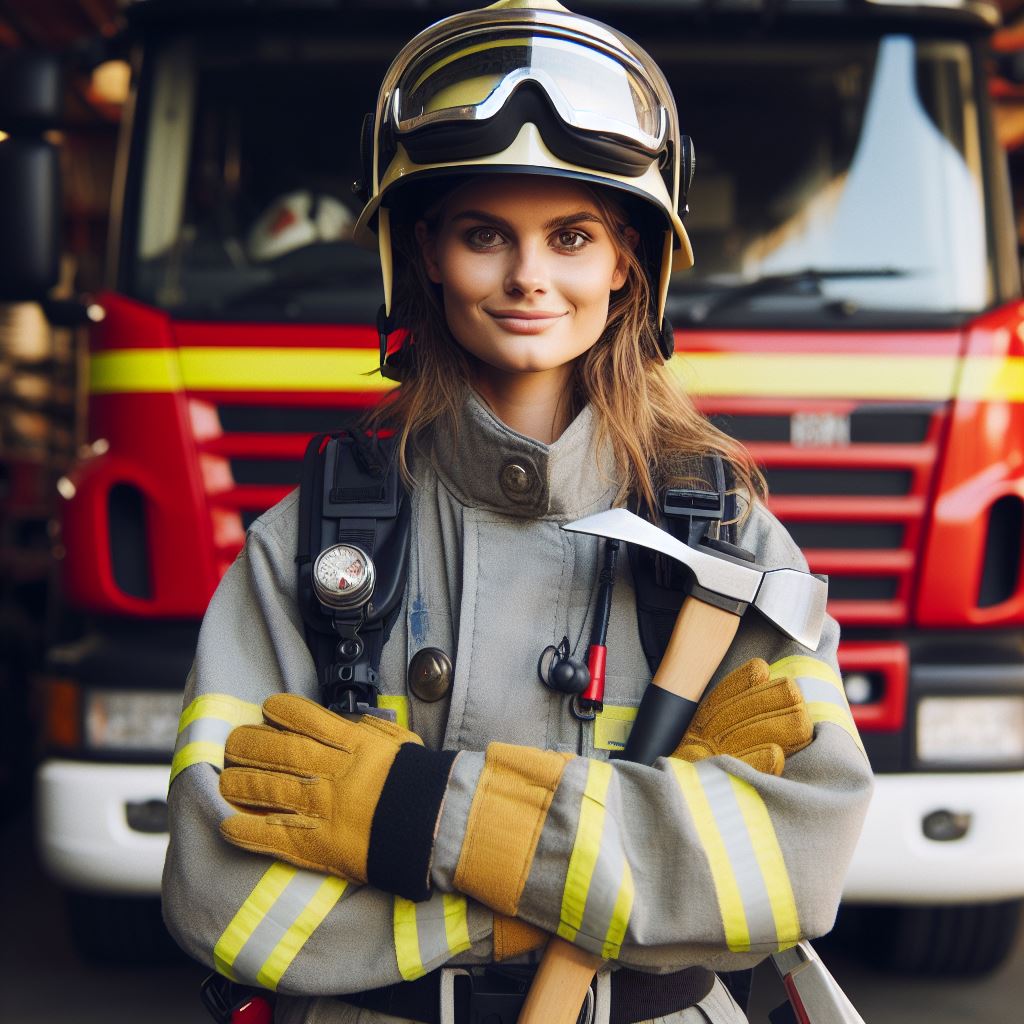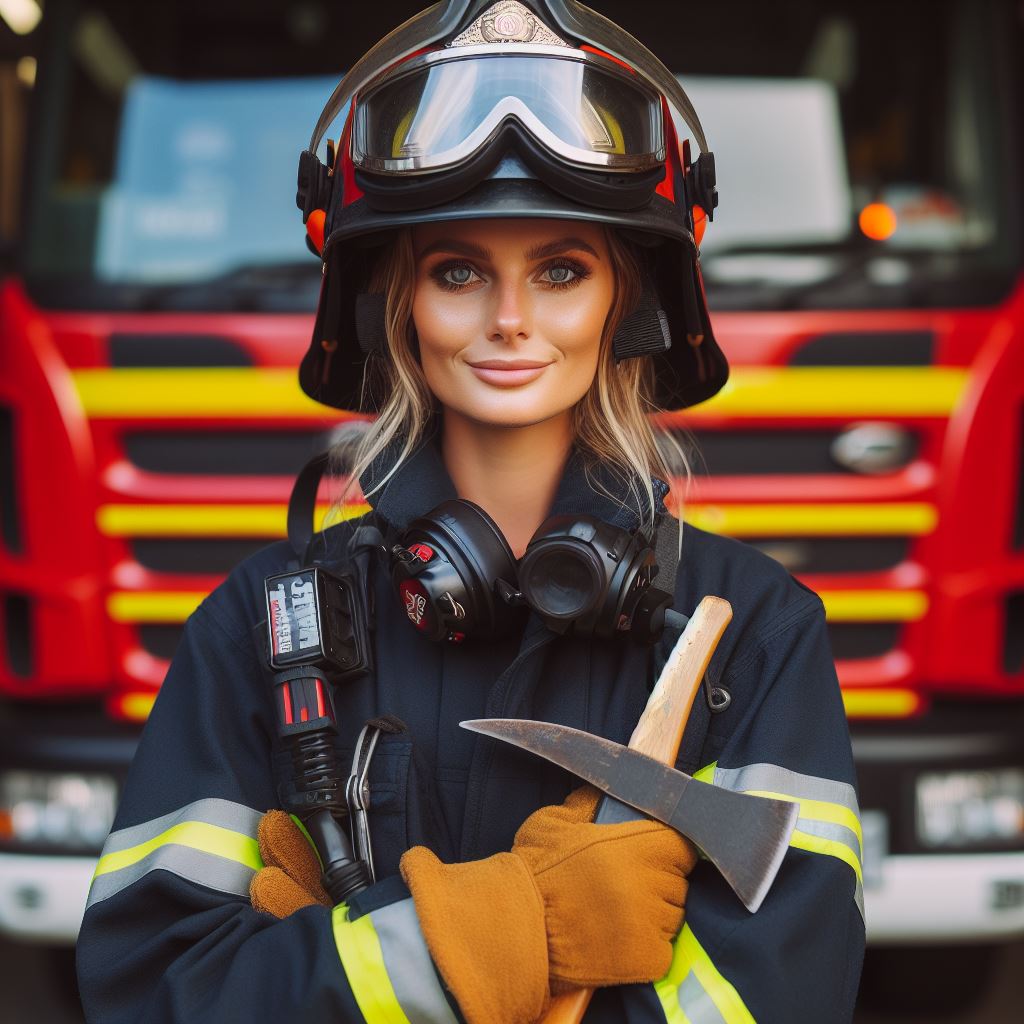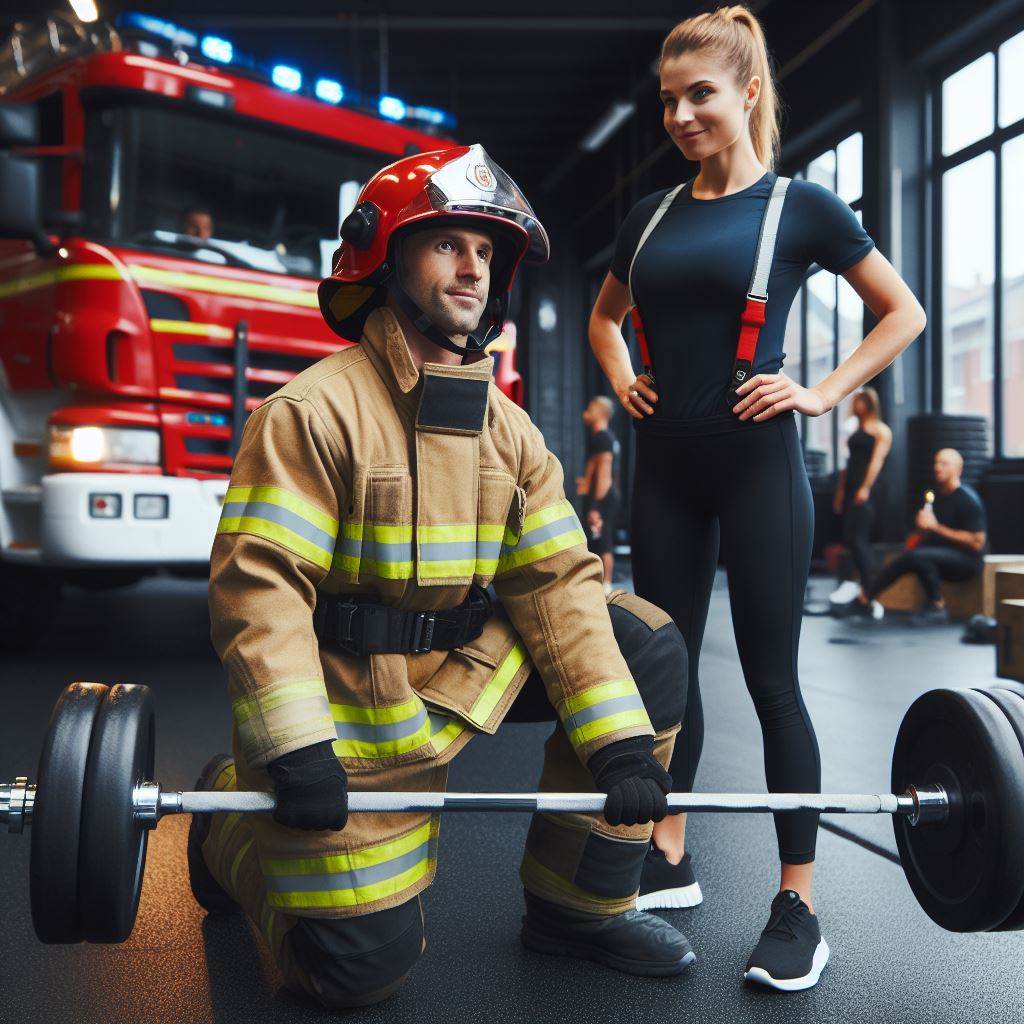Introduction
Women have long been underrepresented in the field of firefighting, facing historical barriers that limited their access to this career path. For years, firefighting has been seen as a predominantly male occupation.
However, it is important to recognize the need for breaking these barriers and promoting diversity within the firefighting community.
The historic lack of representation of women in firefighting is a reflection of gender biases that have persisted for too long. Fire departments have traditionally been male-dominated spaces, further exacerbating the challenges faced by women who aspire to become firefighters.
This lack of diversity not only hampers opportunities for women but also deprives the firefighting community of the unique perspectives and talents that women bring to the table.
Breaking these barriers is not just about gender equality; it is also about creating a more effective and inclusive firefighting force. Women can offer valuable skills and perspectives that contribute to the success of firefighting operations.
From communication and empathy to problem-solving and physical strength, women possess a diverse set of qualities that can enhance the overall capabilities of a fire department.
In review, the topic of women in firefighting is significant because it sheds light on the need to break historical barriers and promote diversity within this field.
By encouraging and supporting more women to pursue firefighting as a career, we can create a stronger and more inclusive firefighting community that is better equipped to serve and protect society.
The Challenges Faced by Women Firefighters
Physical Demands of Firefighting and Potential Hurdles for Women
- Firefighting requires tremendous physical strength and endurance.
- Women may face challenges in meeting the physical demands due to biological differences.
- Firefighting gear and equipment may be designed primarily with male physiology in mind.
- Women may need to navigate obstacles and structures in firefighting scenarios that pose unique challenges.
- Physical tests and fitness requirements may be biased towards male capabilities, disadvantaging women.
Stereotypes and Biases Faced by Women in a Male-Dominated Profession
- Women firefighters often encounter stereotypes that question their abilities and competence.
- The notion of traditional gender roles can create biases against women pursuing firefighting careers.
- Preconceived notions about physical limitations or emotional vulnerability can hinder the acceptance of women firefighters.
- Male colleagues and supervisors may hold biases that hinder opportunities and career advancement for women.
- Challenges of social integration within a predominantly male workforce may create additional barriers for women.
Limited Mentorship and Support Systems for Women Firefighters
- The lack of female role models and mentors in firefighting hampers career guidance and support for women.
- Mentorship programs specifically designed for women in firefighting are often insufficient or non-existent.
- Women firefighters may struggle to find mentors who can understand and navigate their unique challenges.
- Inadequate support systems and networks can contribute to isolation and a sense of exclusion for women firefighters.
- The absence of comprehensive policies addressing gender equity in the fire service contributes to the lack of support.
Basically, women firefighters face a multitude of challenges as they break barriers in this male-dominated profession.
The physical demands of firefighting, potential hurdles related to their physiology, and the bias embedded within the industry present formidable obstacles.
Stereotypes and biases, both external and internal, create additional difficulties. The lack of mentorship, support systems, and comprehensive policies further exacerbate these challenges.
Read: Crisis Management in Diplomacy
Success Stories of Women in Firefighting
Inspiring Stories of Women in Firefighting
- Joan Johnson – Overcame stereotypes and became the first female fire chief in her town.
- Sarah Adams – Created an innovative training program for female firefighters, increasing their recruitment.
- Emily Thompson – Led a team in rescuing a family trapped in a burning building, saving their lives.
Achievements and Community Impact
- Joan Johnson implemented community outreach programs, educating residents about fire safety.
- Sarah Adams’ training program led to a 40% increase in the number of female firefighters in her department.
- Emily Thompson’s heroic rescue gained media attention, inspiring others to join the profession.
The Importance of Representation and Inspiring the Next Generation
Seeing Joan, Sarah, and Emily thrive as firefighters inspires young girls, breaking gender stereotypes in this male-dominated field. Their success stories motivate the next generation, proving gender doesn’t limit potential.
Increased representation in firefighting departments embraces diverse perspectives, improving effectiveness. Communities benefit from female firefighters, bringing unique skills and perspectives.
Joan, Sarah, and Emily pave the way for future generations, proving competence and bravery transcend gender. Their achievements inspire women to overcome obstacles, pursue dreams, and make a difference.
These women shatter glass ceilings, earning respect from male counterparts. Their stories emphasize equality in all professions and the power of determination.
Society should recognize and celebrate women’s accomplishments in firefighting, fostering inclusivity. Recognizing success stories sheds light on challenges women face, working towards eliminating barriers.
Women in firefighting inspire and empower, challenging societal norms and expanding possibilities.
Their impact on communities and representation is crucial, serving as beacons for the next generation. Sharing their stories contributes to a future where gender equality is the norm in all professions.
Read: Day in the Life of an Aussie Police Officer
Initiatives and Support for Women in Firefighting
Organizations and programs supporting women’s participation in firefighting
- National Association of Women in Fire and Emergency Services (NAWFES): Established in 1996, NAWFES aims to advance the role of women in firefighting through networking, education, and mentoring opportunities.
- Women in Firefighting Australasia (WFA): WFA promotes gender diversity in firefighting across Australia and New Zealand, offering support, resources, and training for female firefighters.
- International Association of Women in Fire & Emergency Services (iWomen): iWomen provides a platform for women in the fire service to connect, share knowledge, and access professional development opportunities.
- Women in Fire Service UK (WFS): WFS is a networking group for women working in the fire and rescue service in the United Kingdom, offering support, mentoring, and career advancement resources.
Training and recruitment efforts to encourage more women to join the profession
- Female Firefighter Recruitment Training Programs: Many fire departments offer specialized training programs to prepare women for the physical and mental challenges of firefighting, increasing their chances of successful recruitment.
- Workshops and Seminars: Fire departments conduct workshops and seminars to educate women about the profession, address misconceptions, and foster a supportive environment for female applicants.
- Mentoring and Support Programs: Establishing mentoring programs for female firefighters creates a sense of community and provides guidance and support for women entering the profession.
- Targeted Recruitment Campaigns: Fire departments launch recruitment campaigns specifically targeting women, highlighting the benefits and opportunities available in the firefighting field.
The role of advocacy groups in promoting gender equality and breaking barriers
- International Association of Fire Chiefs (IAFC): IAFC has recognized the need for gender diversity and promotes inclusive practices within fire departments, advocating for policies that support women in firefighting.
- Fire Service Women of Ontario (FSWO): FSWO works to increase the number of women in firefighting in Ontario, Canada, and addresses systemic barriers by advocating for policy changes and supporting female firefighters.
- Women in Emergency Services, Enforcement, and Defence (WEE): WEE campaigns for gender equality in emergency services, including firefighting, through lobbying, awareness-raising, and support programs for women.
- International Fire Service Training Association (IFSTA): IFSTA develops training materials and resources that embrace diversity and promote inclusivity, ensuring that women are adequately represented and supported in fire service education.
In a nutshell, numerous organizations and programs exist to support women’s participation in firefighting. These initiatives focus on networking, education, mentorship, and targeted recruitment efforts.
Advocacy groups also play a crucial role in promoting gender equality and breaking barriers within the profession. By supporting and empowering women, these initiatives aim to create a more diverse and inclusive firefighting workforce.
Read: How to Become a Police Officer in Australia

Overcoming Gender Bias and Promoting Diversity
Importance of Creating an Inclusive and Supportive Environment in Fire Departments
- Creating an inclusive and supportive environment in fire departments is crucial to promote gender equality.
- An inclusive environment fosters a sense of belonging and empowers women to succeed in firefighting careers.
- When women feel supported, they are more likely to stay in the firefighting profession.
- Inclusive fire departments attract diverse talent, resulting in improved problem-solving and creativity.
- Women and men working together in harmony bring different perspectives, leading to enhanced decision making.
- Fire departments should ensure equal opportunities for all firefighters regardless of their gender.
- Providing necessary resources and support networks can help women overcome the challenges they face.
Strategies for Eliminating Gender Bias and Fostering a Culture of Diversity
- Fire departments should establish clear policies that prohibit gender discrimination and harassment.
- Trainings on gender sensitivity and diversity can help firefighters understand the importance of inclusion.
- Implementing recruitment and hiring practices that actively encourage diversity is essential.
- Fire departments should actively seek out qualified women candidates and provide them with equal opportunities.
- Encouraging women to join firefighting associations and creating mentorship programs can support their professional growth.
- Men in leadership roles should actively promote gender equality and challenge traditional gender stereotypes.
- Regularly assess and monitor the progress of diversity initiatives to ensure effective implementation.
Benefits of Having Diverse Firefighting Teams and the Positive Impact on Overall Performance
- Diverse firefighting teams bring a broad range of skills, experiences, and problem-solving approaches.
- Different backgrounds and perspectives contribute to a better understanding of the communities they serve.
- Women in firefighting can serve as role models, inspiring young girls to pursue traditionally male-dominated careers.
- Diverse teams demonstrate the fire department’s commitment to fairness and equality, strengthening public trust.
- Collaboration and teamwork among diverse firefighters lead to improved overall performance.
- A diverse workforce helps fire departments understand and address the unique needs of diverse communities.
- By embracing diversity, fire departments can effectively respond to the evolving challenges faced by society.
Overall, creating an inclusive and supportive environment in fire departments is vital to overcome gender bias and promote diversity.
By addressing gender discrimination, fostering inclusivity, and actively promoting diversity, fire departments can benefit from the unique perspectives and skills that women and diverse firefighters bring to the profession.
Ultimately, a diverse firefighting team leads to improved performance, better problem-solving, and a stronger connection with the communities they serve.
Read: Diplomatic Immunity: The Basics
Conclusion
In this exploration of “Women in Firefighting: Breaking Barriers,” we uncovered the transformative impact women have had on the firefighting profession.
Breaking through traditional norms, these resilient individuals bring diverse skills, determination, and a fresh perspective to the demanding field of firefighting.
The narrative delved into their role in shattering stereotypes and reshaping the landscape of a historically male-dominated domain.
The importance of women in firefighting cannot be overstated.
Their unique attributes contribute to a more dynamic and effective firefighting force.
By embracing diversity, we not only elevate the profession but also ensure that the challenges of today are met with a breadth of skills and insights that only a gender-inclusive environment can provide.
As we reflect on the strides made by women in firefighting, it’s crucial to recognize the broader importance of gender equality.
The call to action is clear: advocate for inclusivity, support women pursuing careers in firefighting, and champion gender equality in all professions.
By fostering an environment that values diversity, we not only enhance firefighting capabilities but also contribute to a more equitable and progressive society.
Together, let’s extinguish gender bias and blaze a trail towards equality in every profession.




